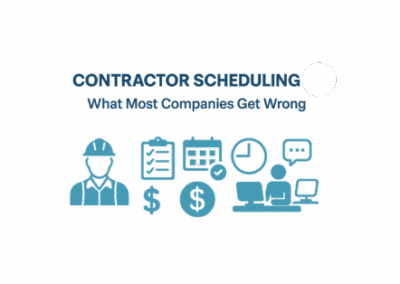Adapting to change is difficult. Convincing others to adapt to change can be excruciating. In the implementation of any change, whether procedural, structural, or something in between, there will always be push back. The academic research behind change management began in the 1990’s and quickly grew into a study of the psychological understanding of employee motivation.
According to Prosci, change management is an enabling framework for managing the people side of change. The general framework follows the process of preparing, equipping and supporting people for change. In turn, managers generally see successful adoption of the changes throughout the workplace. Without this adoption, changes would not be successful, and drain time, money and resources.
Why is Change Management Important in Workforce Management?
As a business-owner, or manager, it’s very common for you to want to implement change in your organization. That might be adopting a new process, using a new software or even moving location. Now, more than ever, technology and software can totally transform how a business operates for the better. However, getting your employees on board with these new tools can be tricky, for many reasons. For many employees, there is a fear that software might replace them in their role. For others, they are comfortable with existing processes and find change difficult. Change management is a crucial skill for managers, for both themselves and their workforce.
We have come up with 6 motivation driven tips to help get your employees on board with change.
Don’t stay at the top too long
Motivating acceptance of change is necessary at every level. That being said, change will be most accepted when encouraged by immediate managers or team leaders. Support of change by both executives and group leads will show the change is beneficial for the whole company, rather than just to the big bosses.
If your organization does not have formal leaders at the employee level, pick well respected employees to help spread the message. Informal leaders can be equally, if not more, influential on change management than formal leaders when it comes to the general workforce.
Show the Rational and Emotional
Spend some time thinking of how the change will benefit individuals at every level. Even when working as part of a team, every employee asks the age old questions “how does this help me?” or even more often, “how does this hurt me?” Without giving compelling answers to these questions, it will be difficult for your employees to see the full benefit of any change. For example, many of our clients find push back on implementing electronic time clocks into an environment where employees are use to paper punch-ins. To the employee this change says: You are now more accountable and we are watching.
As management, the way to counter this point of view is to show the benefits. Let them know efficiency increases are better for everyone. In situations where efficiency increases directly impact a person’s daily activities, frame the change as a way for their energy to be focused on more productive tasks. This will show the rational benefits while calming their emotional worries, which is key for change management.
Don’t Ignore the Downsides
Ask yourself the hard questions and come up with answers before your employees ask them. In most changes employees will ask some combination of the following:
- Will this put my job at risk?
- How will I need to adjust my daily activities to accommodate?
- What will I lose?
- What will I gain?
Instead of avoiding the inevitable chitter-chatter of these types of questions, give your employees the assurance that you have thought about these questions before making the decision. Take time to understand the real questions, who benefits, who loses out, and work out ways deal with them ahead of the curb. This can help mitigate the push back and make change management that bit easier.
Stick to it, no Flip-Flopping
Take the negative criticism and push back as it comes, but do not lose momentum. Very often the pressure of seemingly failing change leads us to want to give up. If you believe the change is for the benefit of your organization, stick to your guns.
Nothing is more confusing and undermining to your authority than giving up too early. Know that change won’t come easy, but don’t throw in the towel without some work. This is not to say you shouldn’t adjust processes if they are not sticking, but stay consistent. Focus on the benefits and work through the challenges.
Ask for Help
Especially in cases of technology changes, there are several resources you can use to give specific assistance. It never hurts to ask. There is almost a 100% chance someone else out there is going through the exact same challenges as you. More often than not, even documenting or demoing any kind of change will prove to be very beneficial. They key to change management is arming yourself with everything you need to be successful.
Patience, Patience, Patience
Easier said than done, but give change time. Changing your employees’ mindset or introducing new procedures will not successfully happen overnight. Depending on the level of change required, there will be a few weeks to a few months lag in actual vs. expected adoption. Rather than getting frustrated, stay strong and provide constructive ways for employees to practice and implement the new practices. Majority of people learn from experience, the more they practice the better they will get.
Follow these steps and focus on making the change seem as positive as possible, while not letting the potential fears of your employees go the wayside. Keep focused on the reasons for the change and know your hard work, and frustration will pay off.




